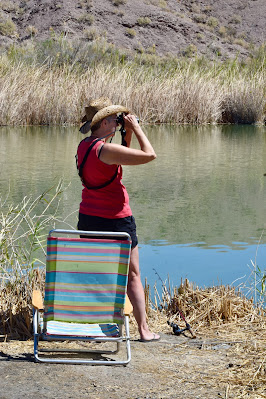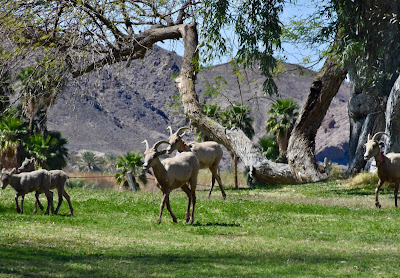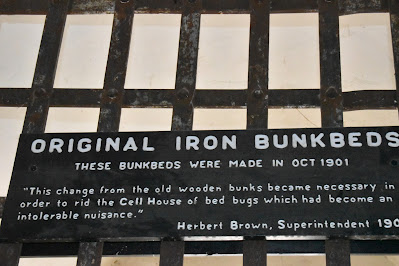A transformation, a resort, a rookery
A sign that pointed the way to West Wetlands Park got our attention, and our time there revealed what amazing things can be accomplished when humanity sets its collective mind to it. The 110-acre site was not so long ago a city landfill, unused by 1970. For starters, I had to wonder why a landfill was ever sited on the shore of a river, but that's another topic.
As we walked a good portion of the park, I could scarcely believe that what I was encountering had been a wasteland of invasive plant species and discarded junk until the transformation was begun in 1990. In a mere 30 years, the ill-treated riverfront acreage has become a welcoming multi-use area. Extensive riparian areas along the now-placid Colorado are alive with bird calls. Multiple trails wind under tall tree canopies and through healthy underbrush, finding their way past ponds that give every appearance of having been nature-created, alive with the bass rumblings of bullfrogs.
Appealing to multiple interests, families and individuals have access to playing fields, picnic ramadas, fishing ponds and much more. I am incredulous about what has been accomplished there.
Among the many birds we saw and heard there were some new ones for the trip list: kestrel, western kingbird, northern flicker, curve-billed thrasher, Anna's hummingbird, white-crowned sparrow and white-winged dove.
Crops and water treatment . . .
By the time the Colorado River reaches that southern locale, an astounding 90% of its water has been diverted to agriculture along the way. At the Mexican border, we saw desalination facilities that treat the depleted flow before it enters Mexico.
Vegetables of every ilk are grown in that clement region, as well as huge amounts of dates. We saw some citrus orchards, but the climate seems much more suited to dates: the groves stretch for many miles.
One of our driving wanders along a waterway (they're everywhere!) surprised us with a small great blue heron rookery. Even more surprising was that we had not spotted so much as one heron prior to that. The large dead-and-falling-apart cottonwood tree supported four active nests, each with an adult heron and babies.
We also drove along Arizona's border with Mexico where we saw a number of birds (and one turtle) to add to the trip list. Oddly enough, quite a few of them were lounging or swimming in a concrete-lined ditch instead of numerous more natural waterways. We identified black-necked stilts, long-billed curlew, osprey, mallard and greater yellow-legs.
And then there was the fishing - take for the day - Chris: one fish, Rita: five mosquito bites.
Birds we identified on that jaunt at and around Mittry Lake included starling, canvasback, lesser goldfinch, roadrunner, white-faced ibis and kildeer.
Resortin' it . . .
Here we are at the corner of Jean Harlow and Spencer Tracy - neither were my favorite actors, but this Sun Vista resort where we've landed is not hard to take.
We have been welcomed cordially by neighbors on every side, invited out to dinner, joined for Chris concerts, and just generally been taken into the fold, despite landing here at the end of the season and after friendships have been forged, many even over years of returning.
True to desert weather, in just a few days, we have been sun scalded by temps in the high 90s, blasted by dust-laden wind and chilled to shivering in evening breezes. Taking it in stride (we must; otherwise, we'd be sitting inside the Wolf Pup, a trailer the size of a walk-in closet), we don and remove flannels and sweaters, wear sandals or boots, shorts or jeans, and adapt.
The pool's water is so welcoming when the sun is scorching and the jacuzzi warms us when the cold wind blows (Johnny Rivers mentioned that in an entirely different way), but mostly we just go on our way with whatever plans have been made. . .
. . . and fruit smoothies help immensely.
I love this sentiment . . .








































